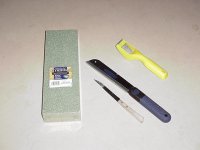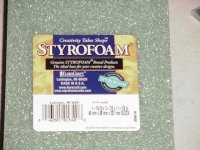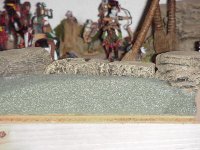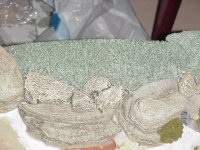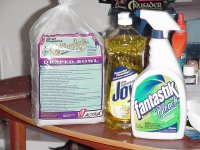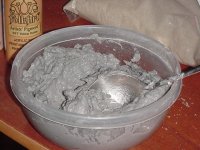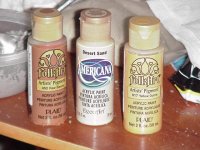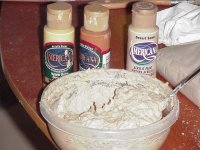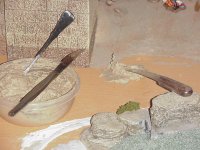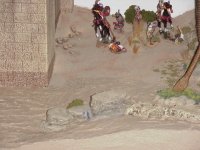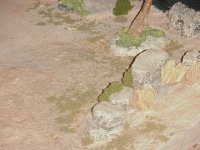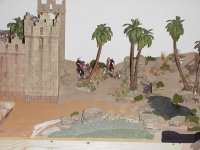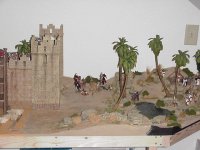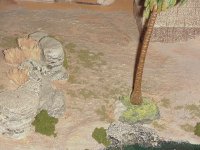mestell
Colonel
- Joined
- Feb 12, 2008
- Messages
- 9,049
I have found some time to work on my "Fall of Acre, 1191" diorama today and have been busy landscaping the northeast corner of my "Acre" facade. While I am at it, I thought I would take the time to share with forum members how I make my desert scenics. Please note that almost everything I am going to share I learned from Ken Osen (Hudson & Allen) and I would like to give him credit for making this technique very easy with great results.
To begin, always prime your base on both sides to prevent warping. I like to use 3/8" plywood (Ken recommends 1/4" MDF).
Also, all of the "artist" materials I will show I purchased from Michael's Craft store. The tools shown were purchased at The Home Depot other than the simple kitchen utensils.
For elevate/raised landscape features I use open cell Floral Foam (what I use is made by Styrofoam which comes in a variety of sizes and shapes, in both green or white). This material is so much easier to work with that beadboard (what a mess) or pink or blue foam board (can be hard to shape). The floral foam is light weight yet strong and is easily glued in place with white glue (Elmer's). I shape it over a trash can with a serrated steak knif, a pull saw (Marples) and a Surform rasp/shaver (Stanley).
To begin, always prime your base on both sides to prevent warping. I like to use 3/8" plywood (Ken recommends 1/4" MDF).
Also, all of the "artist" materials I will show I purchased from Michael's Craft store. The tools shown were purchased at The Home Depot other than the simple kitchen utensils.
For elevate/raised landscape features I use open cell Floral Foam (what I use is made by Styrofoam which comes in a variety of sizes and shapes, in both green or white). This material is so much easier to work with that beadboard (what a mess) or pink or blue foam board (can be hard to shape). The floral foam is light weight yet strong and is easily glued in place with white glue (Elmer's). I shape it over a trash can with a serrated steak knif, a pull saw (Marples) and a Surform rasp/shaver (Stanley).


